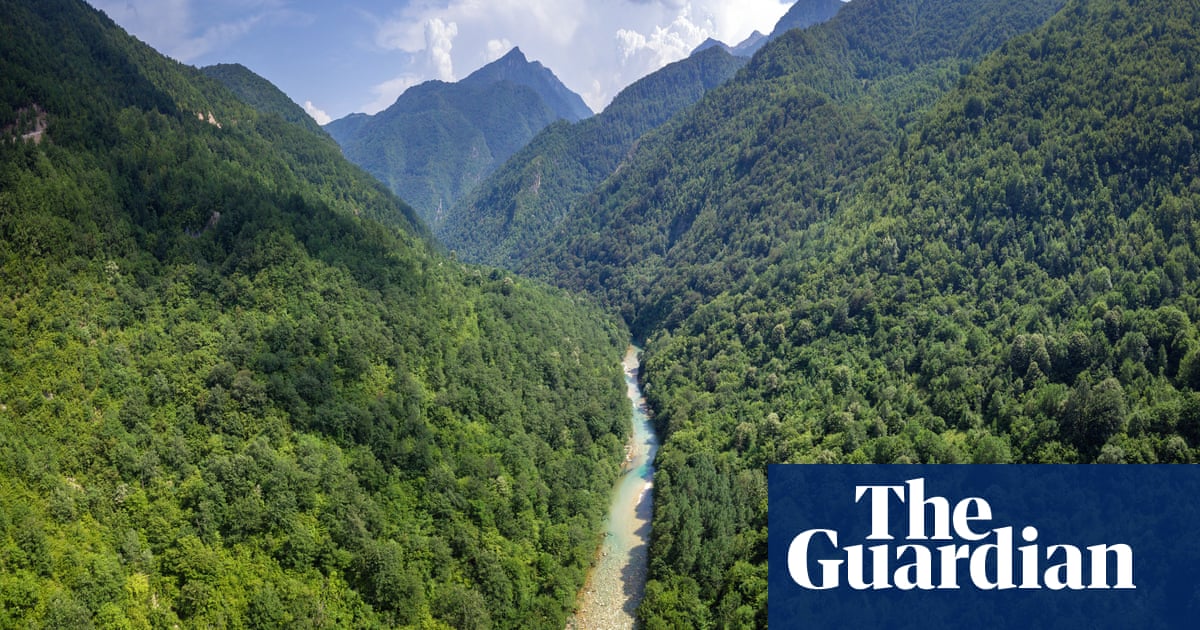It’s one of Europe’s last pristine rivers. Can scientists save it from 50 dams?The Neretva, in Bosnia and Herzegovina, is one of the most bi...
Published on by Water Network Research, Official research team of The Water Network

The Neretva, in Bosnia and Herzegovina, is one of the most biodiverse rivers on the continent – supporting bears, wolves, lynx and many rare species – but more than 50 planned dams could permanently transform the ecosystem
About this content
Karen McVeigh
@karenmcveigh1
Fri 17 Nov 2023 00.00 EST
At the bottom of a ravine, near the mountain town of Ulog, in Bosnia and Herzegovina, lie the sparkling turquoise waters of the Ljuta, a tributary of the Neretva. In its upper stretches, the Neretva is one of Europe’s most unspoiled rivers, and it appears to be a scene of pristine wilderness.
But lethal landmines left behind from the country’s two-decades-old conflict litter its forested slopes, and wild dogs roam the trails. Poring over a map from the country’s mine action centre, ecologist Gabriel Singer, a professor at the Institute of Ecology at the University of Innsbruck, assesses the safest route. Red and black lines indicating where mines lie mark both sides of the Neretva where it meets the Ljuta, leaving just one perilously steep slope navigable.
Clambering over landmine-ridden hillsides is not a typical undertaking for most ecologists, but Singer and fellow scientist Kurt Pinter, who completed the trek in June, are driven by a mission: to save the Neretva. The river, which runs 140 miles (225km) from the Dinaric Alps to the Adriatic Sea, supports bears, wolves lynx and myriad rare species. It ranks among the most biodiverse and intact rivers in Europe – but ecologists say it is also among the most threatened.
More than 50 dams, including one already under construction, are planned along its length and tributaries. If allowed, the scientists say, the dams risk destroying the waterway, its inhabitants and the wider ecosystem. Dams radically change the hydro-morphology – the physical features – of a waterway, replacing turbulent river sections with still water bodies. Their fragmentation of the river can prevent fish migration, and cause dramatic drops in the movement of sediment vital for fish spawning. These impacts usually damage river ecosystems, causing losses of key aquatic species and ecological functions.
Attached link
https://www.theguardian.com/environment/2023/nov/17/its-one-of-europes-last-pristine-rivers-can-scientists-save-it-from-50-dams-aoe?CMP=fb_gu&utm_medium=Social&utm_source=Facebook&fbclid=IwAR0XOXvUbi-adJw8sRr2JKV3Xcfn9uEyfK1vIuBJ1qeY8BiiK6si-rp9lvU_aem_AZuDN9S7PCQ4ueWDP2AL-_naqYuxlPMjMORJAEHdHdF8_Jqp0fyiOUh_I1dKMI_JEuI#Echobox=1700217496Taxonomy
- River Studies
- River Engineering
- River Basin management
- Dams
- River Widening
- Flood damage
- Damage Insurance
- Property Damage Restoration
- Water > River Basin Management